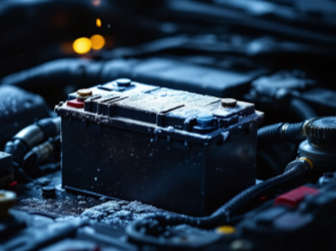Electric Vehicles (EVs) - love them or hate them, they’re here to stay. Many people think EVs are gimmicky vehicles meant only for geeks and environmental conservationists. However, they’re pretty capable vehicles that can be used daily without much of a problem.
EVs are a lot more efficient than gasoline cars, but with constant load shedding, many are hesitant to invest in EVs. In a new report titled State of Electric Vehicles in South Africa, out of more than 10-million cars on our roads, only about 1100 of them are electric. Globally, numbers are growing by about 40% each month, but in SA the numbers are only growing slightly. South Africa’s electricity issues present a major barrier for most people interested in EVs. Other obstacles to ownership include higher taxes and high purchase price.
So, that’s the bad news wrapped up in one paragraph. Below we highlight five happier facts about Electric Vehicles:
-.jpg)
Yes, range anxiety is real, however, it’s blown out of proportion. A recent report from Nissan claims that European EV drivers travelled an average of 14200km per year, while petrol and diesel drivers travelled only 13800km per year. Top-of-the-range Electric cars go even farther. For example, the Tesla Model S performance has a range of 622kms, the Tesla Model X Long Range has a range of 597kms and the Ford Mustang Mach-E has a range of 490km.
Some of the cheaper options also come with decent range ratings. Unless you’re commuting between two planets, most EVs have enough range to be used as daily drivers.
You can also rest assured knowing that increasing range is a key focus for most EV manufacturers and we can expect constant improvement in this department.
.jpg)
Given how electric motors work, EVs always have instant torque, a feature that delivers crazy acceleration from a dead stop. While internal combustion engines have to go through a number of processes to provide torque, electric motors eliminate these processes delivering instant torque at the push of a pedal.
.jpg)
Thanks to regenerative braking, people driving EVs seldom have to use their brakes and when they do, a light press is usually enough for most cases. Also known as ‘Regen’, regenerative braking uses an electric vehicle’s motor as a generator to convert much of the energy lost when decelerating back into stored energy in the vehicle’s battery.
With Tesla cars, for example, drivers simply lift their foot off the accelerator pedal to trigger regenerative braking.
.jpg)
Most EVs come with good warranty packages to give consumers absolute peace of mind. Because batteries are so critical to EV operation, batteries are also covered by comprehensive warranties, such as eight years or 160,000km for XC40 Recharge P8’s batter. Additionally, reports indicate that EVs are also cheaper to maintain.
.jpg)
Just four days after going on sale in South Africa, the R1.2 million Volvo XC40 P8 Recharge was sold out with many buyers left in queue. Volvo South Africa later revealed that although they offered only 15 units, the company would order more units for buyers who missed out.
While these figures are by no means substantial, they still provide ample proof that a number of South Africans are willing to make the leap to EVs, a move that will only encourage manufacturers and EV infrastructure development.
Just like with any vehicle, before investing in an EV, be sure to investigate insurance costs. Selecting the right insurance provider could possibly save you thousands of Rands. MotorHappy agents are available to help you source quotes from some of South Africa’s leading insurance providers. Click here to get a quick and easy car insurance quote.
Road safety: If you drive in high heels, read this
Introducing the new Citroen C3 Max


